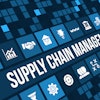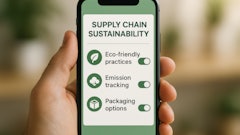
In today's food supply chain landscape, the integration of reverse logistics is not just a strategic advantage but a necessity for sustainability and operational efficiency. The food industry, with its complex network from farm to table, is particularly vulnerable to disruptions that can lead to waste, inefficiency, and safety concerns. At the heart of managing these challenges effectively is traceability—the ability to track and trace food products from their source to the consumer and, when necessary, back again.
Traceability systems serve as the infrastructure that supports the entire reverse logistics process. They allow businesses to monitor the movement of products throughout the supply chain, providing critical data that can be used to make informed decisions in the event of a product recall or withdrawal. This level of visibility is essential for maintaining food safety standards and ensuring that any issues can be quickly addressed to protect consumers and minimize financial impact.
For a food retailer, traceability can mean the difference between a localized product recall and a nationwide crisis. When a safety concern is identified, such as potential contamination, traceability systems allow the retailer to quickly locate the affected products across all their stores. This swift action is crucial to protect consumers and preserve the retailer's reputation. For example, if a batch of lettuce is suspected of E. coli contamination, traceability data can pinpoint which stores received deliveries from the batch. The retailer can then remove the products from shelves before they reach consumers, mitigating health risks and legal liability.
Similarly, food manufacturers rely on traceability for efficient reverse logistics when products fail to meet quality standards or when excess inventory needs to be managed. Traceability systems can inform manufacturers which production lots are defective and must be pulled from the supply chain, ensuring that only safe, high-quality products are in the market. Additionally, when faced with surplus inventory, manufacturers can use traceability data to identify opportunities for redistributing products to discount retailers, food banks, or even for use in alternative products, thus minimizing waste and loss.
The reverse logistics process is further complicated when perishable goods are involved. These items have a limited shelf life, and traceability systems provide the real-time data needed to make quick decisions on rerouting products to locations where they can be sold or donated before expiring. This not only helps in reducing food waste but also supports corporate social responsibility initiatives and community goodwill.
The data collected through traceability systems also provide valuable insights into the root causes of food safety issues. By analyzing this data, companies can identify patterns and weaknesses in their supply chain that may contribute to safety risks. This analysis can lead to improvements in production processes, packaging, storage, and transportation methods to prevent future incidents. For example, if a particular batch of produce is consistently associated with safety concerns, traceability data can help pinpoint whether the issue arises from a specific farm, processing facility, or point in the distribution process.
Moreover, traceability data is invaluable in managing the logistics of a recall or withdrawal. It can inform the most efficient methods for retrieving and handling affected products, whether they need to be returned to the manufacturer, redirected to alternative markets, or disposed of in compliance with regulations. Efficient reverse logistics not only reduce the economic impact of recalls but also minimize waste, contributing to the overall sustainability of the supply chain.
Optimizing reverse logistics in food supply chains is an endeavor rife with challenges yet ripe with opportunities. Technological integration remains a stumbling block as businesses strive to sync traceability systems with legacy infrastructure, ensuring seamless tracking of products from point of return to final disposition. Logistical complexities escalate when dealing with perishable goods, demanding a robust framework capable of rapid rerouting to minimize waste and maximize product lifespan. Regulatory compliance further complicates matters, as varying food safety standards across jurisdictions necessitate meticulous adherence to avoid penalties and maintain consumer trust.
Managing the lifecycle of returned products poses its own set of challenges, requiring a detailed understanding of product conditions and potential secondary markets. This is coupled with the need for effective stakeholder coordination, aligning suppliers, logistics providers, and regulatory bodies on standardized practices for reverse logistics—a task often complicated by differing priorities and objectives.
Yet, within these challenges lie significant opportunities. Optimizing reverse logistics can lead to substantial cost savings and a marked reduction in waste. The wealth of data generated through traceability systems can inform strategic decision-making, offering insights into consumer behavior, product performance, and supply chain efficiencies. It can enhance food safety by swiftly removing recalled or contaminated products from circulation. Furthermore, a well-managed reverse logistics process can bolster a company's reputation for sustainability and corporate responsibility, appealing to the growing consumer base that values environmental conservation.
Innovation in packaging and product design, driven by reverse logistics insights, can lead to more durable, transportable, and recyclable products. Companies that excel in reverse logistics set themselves apart in a competitive marketplace. By investing in advanced traceability solutions, developing comprehensive logistical frameworks, and fostering collaborative relationships, businesses can transform reverse logistics from a necessary cost center into a strategic advantage that not only reduces expenses and waste but also strengthens food safety and enhances brand reputation. The path forward involves embracing these complexities and harnessing the potential of reverse logistics to create resilient, efficient, and sustainable food supply chains.
As the food industry continues to evolve, the role of traceability in enhancing reverse logistics will become increasingly important. Companies that embrace traceability will be better equipped to respond to food safety challenges, maintain the integrity of their supply chain, and build trust with consumers. The strategic integration of reverse logistics, food safety, recalls and withdrawals, and traceability is essential for building resilient, responsive, and sustainable food supply chains.




















